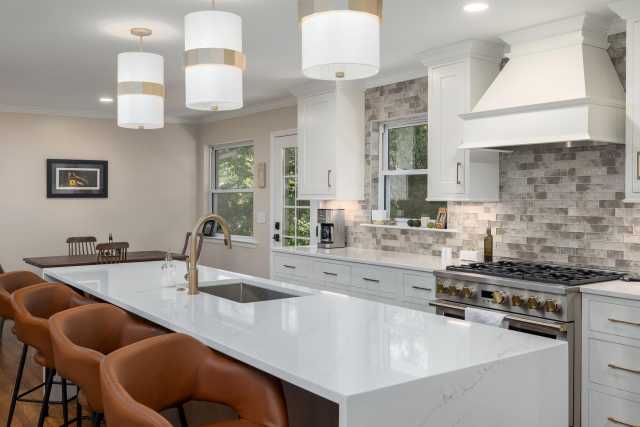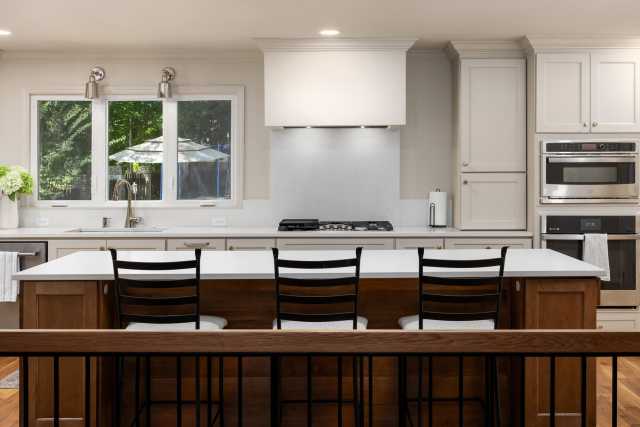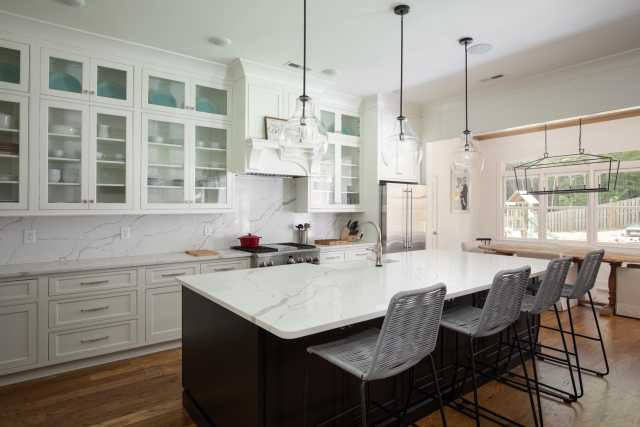The Definitive Guide to Lot Selection for Your Custom Home: A Due Diligence Report - part 1

The Foundation of Your Vision
The decision to build a custom home is a commitment to creating a space that is a true reflection of one's lifestyle, values, and aspirations. It is an endeavor that offers unparalleled control over every detail, from the architectural style to the flow of daily life within its walls. However, the success of this entire enterprise hinges on a single, foundational decision: the selection of the lot. This choice is far more than a simple real estate transaction; it is the critical first step that will dictate the scope of the design, the structure of the budget, the complexity of the construction process, and ultimately, the long-term enjoyment and investment value of the home. The land is not merely a location but the very "canvas for your life's journey," a space that will become the backdrop for a lifetime of memories.While the rewards of custom home building are significant, the process is inherently complex and fraught with potential risks. Experience shows that the most consequential and costly errors almost invariably originate from an improperly vetted lot. Issues that are invisible to the untrained eye—such as unstable soil, restrictive easements, or unforeseen utility extension costs—can escalate a carefully planned budget by tens or even hundreds of thousands of dollars, or in the worst cases, render a parcel of land entirely unbuildable. The process can be overwhelming, but it need not be a source of stress.This report provides a comprehensive, multi-disciplinary due diligence framework designed to navigate these complexities. It moves beyond a simple checklist to offer a strategic methodology for identifying, evaluating, and securing the ideal parcel of land. By synthesizing expertise from the fields of real estate, finance, law, engineering, and construction, this guide provides the tools necessary to mitigate financial and logistical risks. A methodical, informed approach transforms the uncertainty of land acquisition into a confident, calculated investment, ensuring that the ground upon which a dream home is built is as solid and secure as the vision itself.
Assembling Your Strategic Acquisition Team and Financial Framework
The conventional wisdom of real estate—find a property, then secure financing and professional help—is inverted in the world of custom home building. The unique and complex nature of vacant land necessitates a proactive, team-based approach. Before initiating a land search, the first and most critical step is to establish a robust financial framework and assemble a team of qualified professionals. This team is not assembled to facilitate a transaction for a pre-selected property; rather, their primary role is to serve as a due diligence unit to evaluate the land itself, ensuring its viability before a purchase is ever made.
Establishing a Comprehensive Financial Plan
A successful custom home project begins with a realistic and all-encompassing budget. A common and critical error is to underestimate the total project cost by focusing too narrowly on the land's purchase price. The land itself is just one component of a much larger financial equation.
Budgeting Beyond the Purchase Price
As a general guideline, the cost of land acquisition often represents 20-25% of the total project budget. This percentage, however, can fluctuate dramatically based on the desirability of the location and the physical condition of the site. A comprehensive budget must therefore be structured to account for every phase of the project, from raw dirt to finished interiors.
Detailed Budget Categories
A meticulously detailed budget is the primary tool for financial control. It should be broken down into the following major categories:
- Land Acquisition: The negotiated purchase price of the lot.
- Site Development Costs: These are the costs to make the land buildable. This category includes land clearing (tree and brush removal), grading and earthmoving to create a level building pad and ensure proper drainage, demolition of any existing structures, and the installation of an access road or driveway. These costs can be substantial and are highly dependent on the lot's condition.
- Professional Fees (Soft Costs): This includes fees for the architect or designer, structural and geotechnical engineers, the land surveyor, and the real estate attorney. These fees typically account for 10-15% of the overall budget.
- Permits and Impact Fees: Every municipality charges fees for building permits. Additionally, some jurisdictions levy impact fees to help fund public infrastructure like schools, parks, and roads, which can add thousands to the cost.
- Utility Connection Fees: The cost to connect to public utilities such as water, sewer, electricity, and gas can be significant, especially if the service lines need to be extended a long distance to the build site.
- Hard Construction Costs: This is the largest portion of the budget, typically 45-55%, covering all labor and materials required for the physical construction of the home, from the foundation and framing to the roofing and exterior finishes.
- Interior Finishes, Appliances, and Landscaping: This category includes all interior elements like flooring, cabinetry, countertops, and lighting, as well as appliances and the final landscaping, including driveways, patios, and plantings. These costs are highly variable based on the desired quality and can range from 8% to over 15% of the budget.
- Financing Costs: This includes loan origination fees, appraisal fees, and the interest paid on the construction loan during the building period.
The Critical Contingency Fund
Perhaps the most important line item in a custom home budget is the contingency fund. It is a non-negotiable reserve, typically set at 10-20% of the total project cost, to cover unforeseen expenses. These can arise from a multitude of sources, such as discovering rock during excavation, sudden increases in material prices, or design changes made mid-construction. Without an adequate contingency fund, a project can easily be derailed by unexpected challenges.
Navigating Construction and Land Financing
Financing the purchase of land and the construction of a new home is a specialized field, fundamentally different from securing a traditional mortgage for an existing property. Lenders perceive construction financing as a higher-risk endeavor because, until the home is complete, there is no tangible asset to serve as collateral. This elevated risk profile translates into more stringent requirements for the borrower.
Specialized Nature of Construction Loans
Compared to standard mortgages, construction loans typically feature:
- Higher Down Payments: Lenders often require a down payment of 20-30% of the total project cost.
- Higher Interest Rates: The interest rates on construction loans are generally higher to compensate the lender for the increased risk.
- Shorter Terms: These are short-term loans, usually for a period of 12-18 months, designed to cover only the construction phase.
Types of Financing
Several financing vehicles are available, each suited to different circumstances:
- Lot/Land Loans: These loans are specifically for the purchase of undeveloped property. They can be categorized based on the state of the land: raw land loans for completely undeveloped parcels, unimproved land loans for properties with some development, and improved land loans for lots where utilities are readily accessible. Local banks, credit unions, and specialized agricultural lenders are the primary sources for these loans.
- Construction-to-Permanent (C2P) Loans: This is often the most efficient option. It is a single loan that closes once, funding the construction phase and then automatically converting into a standard, long-term mortgage upon the home's completion. This single-close process streamlines paperwork, reduces total closing costs, and importantly, allows the borrower to lock in a permanent interest rate at the beginning of the project, protecting them from rate fluctuations during the build.
- Standalone Construction Loans: This is a two-step process. The borrower first secures a short-term, often interest-only, loan to finance the construction. Once the home is built and a certificate of occupancy is issued, the borrower must then apply for a separate, traditional mortgage to pay off the construction loan in full.
Lender Pre-Approval and Scrutiny
Obtaining pre-approval from a lender is a foundational step that must be taken before seriously searching for land. This process provides a clear understanding of one's borrowing capacity. Lenders will conduct a rigorous evaluation of not only the borrower's financial health—requiring a strong credit score (typically 680 or higher), stable income, a manageable debt-to-income ratio, and sufficient cash reserves—but also the viability of the project itself. The lender will need to see detailed architectural plans, a comprehensive budget, and will often need to approve the chosen builder, verifying their credentials, financial stability, and track record of successful projects.
The Roles of Your Professional Acquisition Team
Building a custom home is a collaborative effort, and the success of the project is heavily dependent on the expertise of the team assembled. Engaging these professionals early—before a lot is purchased—is not an expense but a critical investment in risk mitigation.
- The Real Estate Agent (Accredited Land Consultant - ALC): Standard residential real estate agents often lack the specialized knowledge required for land transactions. It is imperative to engage an agent who specializes in land, preferably one holding the Accredited Land Consultant (ALC) designation from the REALTORS® Land Institute. These professionals possess deep expertise in land valuation, zoning complexities, easement interpretation, soil and water rights, and the unique negotiation tactics pertinent to land deals.
- The Custom Home Builder: The builder should be brought into the process before an offer is made on a lot. Their practical, on-the-ground experience is invaluable for assessing a lot's true buildability. A builder can quickly identify potential red flags that an untrained eye would miss, such as distinguishing between "realtor flat" (a term for land that looks flat but has drainage issues) and "builder flat" (truly suitable for building). They can provide preliminary estimates for site work costs, which can dramatically affect the total cost of a lot, and can prevent the catastrophic mistake of purchasing a parcel that is either unbuildable or prohibitively expensive to develop.
- The Architect/Designer: The architect is the visionary who translates the client's lifestyle and aesthetic preferences into a functional and beautiful home design. Critically, they do so while respecting the unique opportunities and constraints presented by the lot, such as its topography, views, and solar orientation. They are experts in local building codes and play a key role in navigating the complex municipal permitting process.
- The Real Estate Attorney: An attorney specializing in real estate is essential for navigating the legal intricacies of the land purchase. Their role includes reviewing and negotiating the purchase agreement to include necessary contingencies, conducting a thorough title search to uncover any easements, liens, or deed restrictions, interpreting complex zoning ordinances, and reviewing any Homeowners Association (HOA) governing documents.
- The Land Surveyor: A licensed land surveyor performs a non-negotiable service. They are responsible for officially establishing the exact legal boundaries of the property, identifying the precise location of any recorded easements, and creating a detailed topographic map. This survey is the foundational document upon which all site planning, architectural design, and engineering work is based.
The sequence of these actions is what separates a well-managed project from a potential disaster. The complexity of the asset—the vacant lot—demands a specialized team for evaluation. The high financial exposure necessitates securing specialized financing upfront. Therefore, the logical and prudent process is to first establish the financial framework and assemble the core professional team. This team then functions as a cohesive due diligence unit, vetting potential lots to transform what would be a speculative risk into a calculated, well-informed investment. The initial cost of engaging these professionals early is, in reality, a powerful risk mitigation expense that can prevent financial losses orders of magnitude greater.





